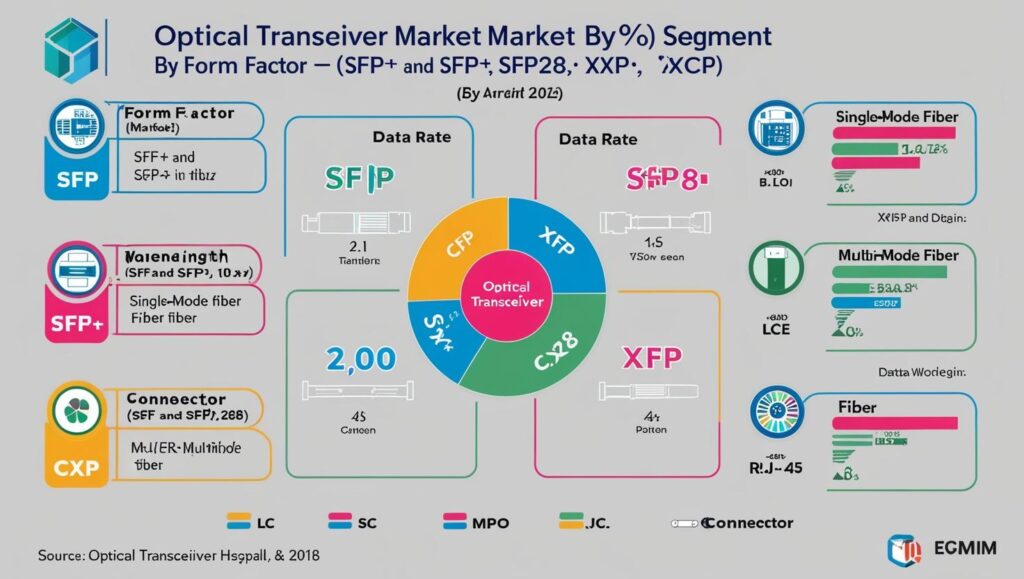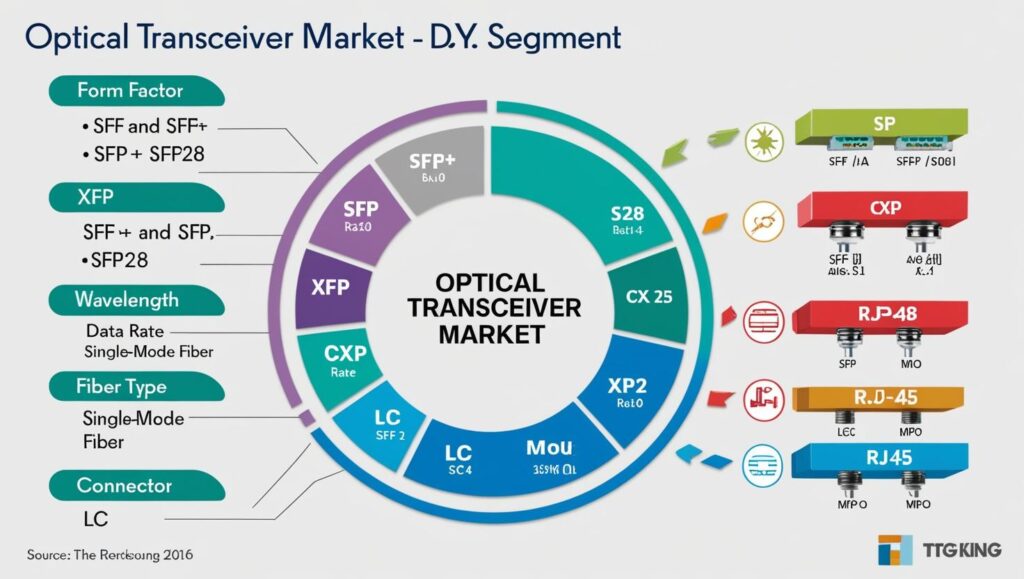The digital age is evolving at an unprecedented pace, and at the core of this transformation lies the need for faster, more efficient data transmission. As demand for high-bandwidth applications such as 5G, cloud computing, AI processing, and IoT surges, the optical transceiver industry—responsible for transmitting and receiving data via fiber optics—has become a critical enabler of global connectivity. Now, with the infusion of Artificial Intelligence (AI), this industry is undergoing a profound evolution, setting the stage for smarter, self-optimizing, and highly scalable communication networks.

Understanding Optical Transceivers in the Modern Era
Optical transceivers are essential components in data centers, telecommunications, and enterprise networks. These compact devices convert electrical signals into optical signals and vice versa, enabling the high-speed transfer of data across fiber optic cables. Traditional optical transceivers require manual configuration, calibration, and monitoring. However, as network complexity increases, manual oversight is becoming impractical and inefficient.
This is where AI-driven solutions step in to revolutionize how optical transceivers function and contribute to overall network performance.
AI-Powered Smart Diagnostics and Monitoring
One of the most significant contributions of AI to the optical transceiver space is real-time diagnostics. AI algorithms can continuously analyze telemetry data from transceivers—such as power levels, temperature, signal integrity, and error rates—to detect anomalies and performance degradation. By doing so, operators can identify issues long before they escalate into failures, enabling predictive maintenance and reducing costly downtimes.
For example, AI can flag a gradual decline in signal strength that may not trigger alarms under traditional systems, allowing network engineers to proactively replace or adjust hardware.
Dynamic Configuration and Self-Optimization
AI enables intelligent automation of optical transceiver configuration. Instead of relying on static settings, AI algorithms can dynamically adjust transmission power, modulation formats, and bandwidth allocation in real time based on traffic demand and environmental conditions. This flexibility allows transceivers to adapt to variable network loads and ensure optimal data flow without human intervention.
In high-capacity environments like hyperscale data centers, where thousands of transceivers are deployed, this level of automation is a game-changer—improving operational efficiency, reducing manual labor, and minimizing human error.
Enhancing Network Security
AI also plays a pivotal role in securing optical communication networks. By analyzing data patterns and comparing them against known baselines, AI can detect unusual activities that may signify a cyberattack or intrusion attempt—such as optical tapping or signal spoofing. These insights help organizations implement real-time threat detection and response, further safeguarding sensitive information transmitted via fiber networks.
Download PDF Brochure @ https://www.marketsandmarkets.com/pdfdownloadNew.asp?id=161339599
Boosting Energy Efficiency and Sustainability
As the demand for high-speed data transmission grows, so does energy consumption in data communication infrastructure. AI can assist in reducing the carbon footprint of optical transceivers by optimizing power usage based on current operating conditions and workloads. Smart energy management techniques powered by AI can significantly reduce idle power drain and extend the lifespan of hardware, supporting sustainability goals in the telecom and data center industries.
Facilitating Edge Computing and 5G Expansion
The rise of edge computing and 5G networks necessitates highly responsive and localized data processing. Optical transceivers deployed at the network edge can benefit from AI by ensuring ultra-low latency, high reliability, and automated failover systems. AI enhances coordination between transceivers and distributed edge devices, improving QoS (Quality of Service) and enabling seamless 5G and IoT experiences for end users.

Enabling Intelligent Supply Chain and Manufacturing
AI isn’t just improving transceiver performance—it’s also reshaping the manufacturing process. By leveraging AI in production lines, manufacturers can perform real-time quality inspections, predict equipment failures, and optimize workflows. This leads to faster time-to-market, better product consistency, and cost reductions, especially in the fabrication of advanced optical modules for hyperscale deployment.
Challenges and Considerations
Despite the potential, integrating AI into the optical transceiver industry comes with its own set of challenges:
Data Privacy: Collecting and analyzing telemetry data must comply with strict data protection regulations.
Interoperability: Ensuring AI solutions work across different transceiver vendors and legacy infrastructure.
Complexity: AI models must be trained on vast datasets, which requires time, expertise, and processing power.
Standardization: The industry lacks universal standards for AI integration into optical modules.
Overcoming these hurdles will require collaboration between hardware vendors, network operators, and AI developers to ensure scalable and interoperable solutions.
The Road Ahead: Toward Autonomous Networks
The long-term vision for the optical transceiver industry is to become a part of self-managing, fully autonomous networks. AI will serve as the central intelligence that orchestrates communication infrastructure, eliminating human bottlenecks and enabling true zero-touch networking. With continued innovation, the future may see transceivers that not only communicate but also learn, adapt, and optimize themselves in real time.
The AI impact on the optical transceiver industry is unlocking a new era of speed, intelligence, and resilience in high-speed communication systems. From predictive diagnostics and dynamic optimization to enhanced security and sustainability, AI is not just an enhancement—it’s a strategic enabler of next-generation networks. As industries embrace the data-driven future, AI-empowered optical transceivers will be at the forefront, powering the backbone of global digital infrastructure.
